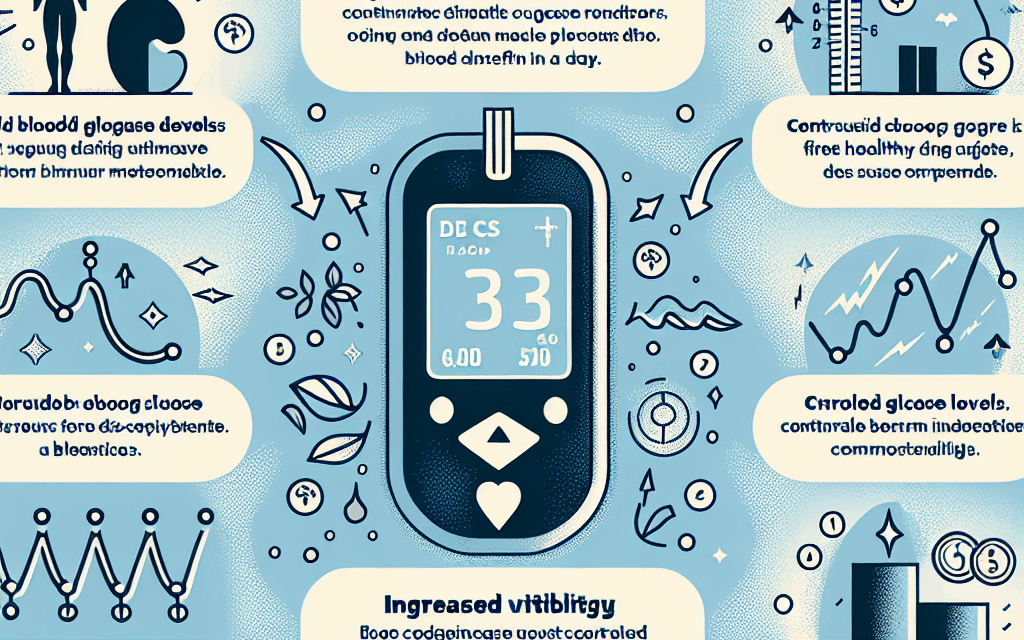Understanding the Advantages of Over-the-Counter CGMs
Continuous Glucose Monitors (CGMs) have revolutionized diabetes management, providing real-time glucose data that empowers individuals to make informed decisions about their health. Traditionally, CGMs were available only through prescriptions, limiting access for many. However, the recent introduction of over-the-counter (OTC) CGMs has changed the landscape, making these devices more accessible. This article explores the advantages of OTC CGMs, delving into their benefits, usability, cost-effectiveness, and the impact on diabetes management.
1. Enhanced Accessibility and Availability
One of the most significant advantages of OTC CGMs is their enhanced accessibility. Previously, individuals with diabetes had to navigate a complex healthcare system to obtain a prescription for a CGM. This often involved multiple doctor visits, insurance approvals, and sometimes lengthy waiting periods. With OTC CGMs, users can purchase these devices directly from pharmacies or online retailers, streamlining the process.
Accessibility is crucial for effective diabetes management. According to the Centers for Disease Control and Prevention (CDC), approximately 34.2 million Americans have diabetes, and many of them could benefit from continuous glucose monitoring. By removing the prescription barrier, OTC CGMs allow more individuals to monitor their glucose levels regularly, leading to better health outcomes.
- Immediate Availability: Users can purchase CGMs without waiting for a doctor’s appointment or insurance approval.
- Wider Distribution: OTC CGMs are available in various retail settings, including pharmacies and online platforms, making them easier to find.
- Increased Awareness: The availability of OTC CGMs raises awareness about diabetes management tools, encouraging more individuals to take charge of their health.
For example, a study published in the journal Diabetes Technology & Therapeutics found that individuals who used CGMs reported feeling more empowered in their diabetes management. The ease of access to these devices can lead to increased usage and better glycemic control.
2. Cost-Effectiveness and Affordability
Cost is a significant barrier for many individuals seeking diabetes management tools. Prescription CGMs can be expensive, with costs often exceeding several hundred dollars per month, depending on insurance coverage. OTC CGMs, on the other hand, are typically more affordable, making them a viable option for a broader range of consumers.
OTC CGMs can reduce the financial burden associated with diabetes management. Many manufacturers have recognized the need for cost-effective solutions and have developed devices that provide essential monitoring capabilities at a lower price point. This shift is particularly important given that diabetes management can be financially taxing, with the American Diabetes Association estimating that the average annual cost of diabetes care is around $16,752 per person.
- Lower Upfront Costs: OTC CGMs often have lower initial costs compared to prescription models.
- Reduced Long-Term Expenses: By enabling better glucose control, OTC CGMs can help prevent complications that lead to higher healthcare costs.
- Insurance Flexibility: Without the need for prescriptions, users can choose devices that fit their budget without worrying about insurance limitations.
For instance, a case study involving a group of patients who switched from prescription CGMs to OTC models showed a significant reduction in their monthly expenses while maintaining similar levels of glycemic control. This financial relief can encourage more individuals to invest in their health and well-being.
3. Improved User Experience and Convenience
The user experience associated with OTC CGMs is another critical advantage. These devices are designed with the end-user in mind, focusing on ease of use and convenience. Many OTC CGMs feature user-friendly interfaces, simplified setup processes, and mobile app integrations that enhance the overall experience.
Convenience is paramount for individuals managing diabetes. The ability to monitor glucose levels continuously without the need for fingerstick tests can significantly improve adherence to monitoring regimens. Additionally, many OTC CGMs offer features such as alerts for high or low glucose levels, which can help users take timely action to prevent complications.
- Streamlined Setup: OTC CGMs often come with straightforward instructions, allowing users to set them up quickly and easily.
- Mobile App Integration: Many devices sync with smartphones, providing users with real-time data and insights into their glucose trends.
- Comfort and Discretion: Modern CGMs are designed to be worn comfortably and discreetly, making them suitable for everyday use.
A survey conducted by the Diabetes Technology Society found that users of OTC CGMs reported higher satisfaction levels compared to those using traditional monitoring methods. The convenience of having real-time data at their fingertips allowed users to make more informed dietary and lifestyle choices, ultimately leading to better health outcomes.
4. Empowerment Through Data and Insights
OTC CGMs provide users with a wealth of data that can empower them to take control of their diabetes management. Continuous glucose monitoring allows individuals to see how their glucose levels fluctuate throughout the day, providing insights into how food, exercise, stress, and other factors affect their blood sugar.
This data-driven approach enables users to make informed decisions about their health. For example, individuals can identify patterns in their glucose levels and adjust their diets or insulin dosages accordingly. This level of insight was previously only available to those with access to prescription CGMs and healthcare professionals.
- Real-Time Monitoring: Users can track their glucose levels in real-time, allowing for immediate adjustments to their management strategies.
- Trend Analysis: Many OTC CGMs provide trend data, helping users understand how their glucose levels change over time.
- Personalized Insights: Users can tailor their diabetes management plans based on their unique data, leading to more effective control.
A study published in The Journal of Clinical Endocrinology & Metabolism highlighted that individuals using CGMs reported improved glycemic control and reduced hypoglycemic events. The ability to visualize glucose trends and make data-driven decisions is a game-changer for many users, fostering a sense of empowerment and ownership over their health.
5. Support for Preventive Health Measures
OTC CGMs not only benefit individuals already diagnosed with diabetes but also serve as a valuable tool for preventive health measures. As awareness of prediabetes and insulin resistance grows, more individuals are seeking ways to monitor their glucose levels proactively. OTC CGMs provide an accessible means for these individuals to track their glucose levels and make lifestyle changes before developing full-blown diabetes.
Preventive health measures are crucial in reducing the incidence of diabetes and its associated complications. The CDC reports that more than 88 million American adults have prediabetes, and many are unaware of their condition. By using OTC CGMs, individuals can gain insights into their glucose levels and identify potential issues early on.
- Early Detection: Regular monitoring can help identify abnormal glucose levels before they progress to diabetes.
- Lifestyle Adjustments: Users can make informed dietary and exercise choices based on their glucose data, promoting healthier habits.
- Community Awareness: The availability of OTC CGMs can foster community discussions about diabetes prevention and management.
A case study involving a group of prediabetic individuals using OTC CGMs demonstrated that those who actively monitored their glucose levels were more likely to adopt healthier lifestyles, resulting in improved metabolic health. This proactive approach can significantly reduce the risk of developing type 2 diabetes and its complications.
Conclusion
The introduction of over-the-counter continuous glucose monitors has transformed diabetes management by enhancing accessibility, affordability, user experience, and empowerment through data. As more individuals gain access to these devices, the potential for improved health outcomes increases significantly. The ability to monitor glucose levels continuously allows users to make informed decisions about their health, leading to better glycemic control and a reduced risk of complications.
Moreover, OTC CGMs support preventive health measures, enabling individuals to take charge of their health before developing diabetes. As awareness of these devices grows, it is essential for healthcare providers, policymakers, and communities to support their use and promote education around diabetes management. The future of diabetes care is bright, with OTC CGMs playing a pivotal role in empowering individuals to lead healthier lives.





